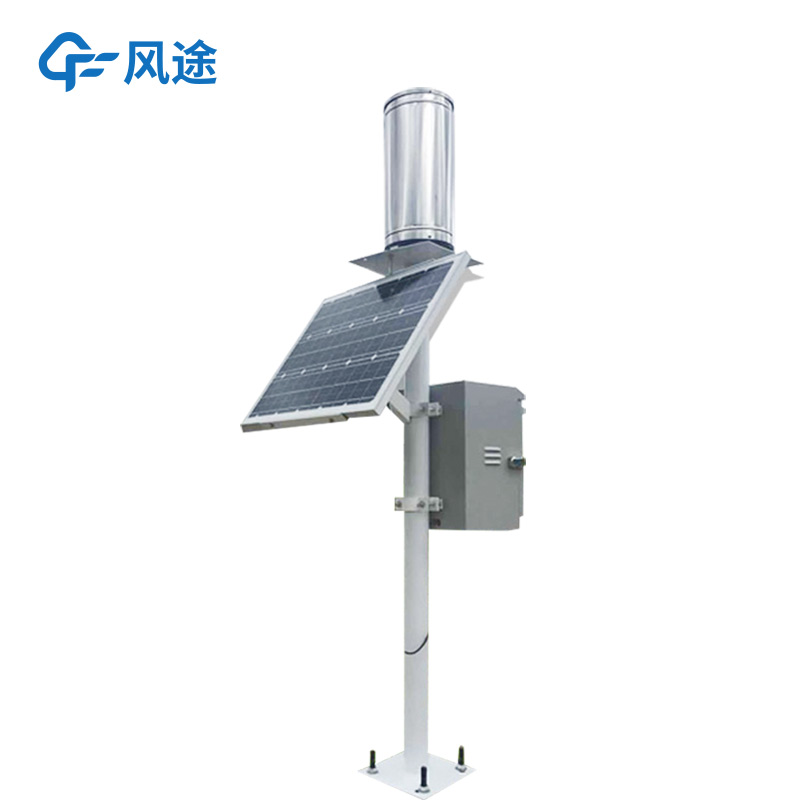Tianyi Sensor IOT Technology Co., Ltd
Sales Manager:Ms. Emily Wang
Cel,Whatsapp,Wechat:+86 15898932201
Email:info@fengtutec.com
Add:No. 155 Optoelectronic Industry Accelerator, Gaoxin District, Weifang, Shandong, China

Sales Manager:Ms. Emily Wang
Cel,Whatsapp,Wechat:+86 15898932201
Email:info@fengtutec.com
Add:No. 155 Optoelectronic Industry Accelerator, Gaoxin District, Weifang, Shandong, China
time:2025-07-03 08:55:42 source:Weather Station viewed:142 time
Against the backdrop of climate change, extreme rainfall events are becoming increasingly frequent, posing severe challenges to flood control and drought relief work. As an important technical means to address these challenges, the rainfall monitoring station is playing an increasingly significant role.
A rainfall monitoring station consists of a rainfall sensor, a data collector, a transmission module, and a cloud platform. Rainfall sensors can adopt tipping bucket, piezoelectric, or optical types, etc., which can accurately measure rainfall in millimeters or even 0.01-millimeter levels, with a resolution up to the minute level. The data collector collects data from the sensor, performs preliminary processing and storage, and has functions such as real-time clock and timing storage to ensure the accuracy and integrity of the data. The transmission module transmits the data to the cloud platform quickly through wireless communication technologies such as 4G, 5G, and LoRa. The cloud platform conducts in-depth analysis and storage of the data and provides visual display.
The working principle of the system is not complicated. When it rains, the rainfall sensor detects raindrops and converts them into electrical signals. For example, in a tipping bucket rain gauge, when the rainfall reaches a preset value, the bucket tips to trigger a switch, outputting a pulse signal to achieve digital recording of rainfall. The data collector collects these signals regularly, and after preliminary processing, sends them to the cloud through the transmission module. The cloud platform receives the data and stores it in a database. It can also generate rainfall maps and predict watershed peak flood flows by combining traditional hydrological models, providing a data foundation for subsequent applications.
In flood control, it can monitor changes in rainfall in real time and provide key data for flood warnings. For example, by deploying a large number of monitoring nodes in a watershed, and through data feedback at short time intervals, many mountain flood disasters have been successfully warned, gaining precious time for resident evacuation. When integrated with water level stations, by fusing rainfall intensity and river water level data, flood risks can be warned several hours in advance. For urban waterlogging, by deploying monitoring stations at key nodes of the drainage network and integrating with pipe network liquid level sensors to build a flood risk heat map, the intelligent water affairs platform can be coordinated to automatically trigger the start and stop of pumping stations, effectively reducing waterlogging points. In drought relief, the precipitation data accumulated by the system can help farmers dynamically adjust irrigation strategies based on crop water demand models, achieve precise irrigation, and save water resources.
Visual rainfall monitoring is an advantage of the system. Through the data visualization platform, users can intuitively see the change curve of rainfall over time, regional precipitation heat maps, etc. Complex rainfall monitoring data are presented in a graphical interface. Management departments can clearly grasp the rainfall situation based on this and formulate scientific and reasonable decisions, such as adjusting urban drainage plans and issuing warning information. In addition, the system also supports multi-parameter display, integrating meteorological parameters such as temperature, humidity, and wind speed with rainfall data for display, building a multi-dimensional monitoring network to enhance the overall grasp of weather conditions.

Measuring river water levels is necessary for flood control and disaster reduction. Through real-time monitoring of river water levels, we can timely grasp the changes in water levels, issue warnings before floods arrive, strive for time for personnel evacuation and property transfer, and minimize t...
The Portable IV Curve Tester FT-IV2 is an instrument specifically designed for outdoor photovoltaic testing, capable of quickly measuring the current-voltage (I-V) characteristic curves of photovoltaic modules or strings.The tester features a maximum voltage measurement range of 1500V and a current...
Water level warning is an important means of preventing flood disasters and ensuring the rational utilization of water resources. When the water level of rivers and lakes exceeds the safety threshold, it may trigger floods, submerge farmland, destroy houses, and pose a threat to people's lives a...
Anemometer for drones, the ultrasonic anemometer is a high - precision meteorological monitoring device designed based on the principle of ultrasonic resonance. It is specifically developed for the low - altitude environmental monitoring needs of small drones and unmanned platforms. Its core technol...